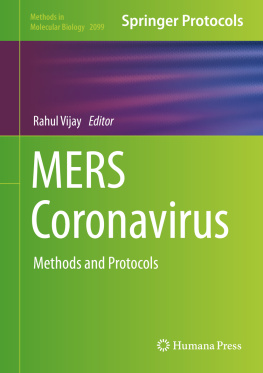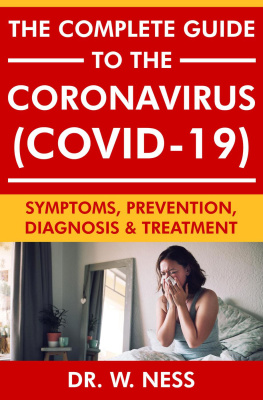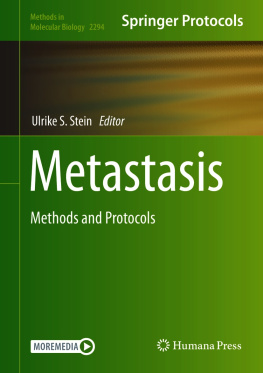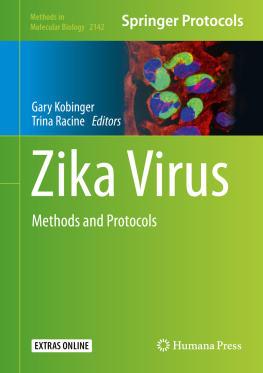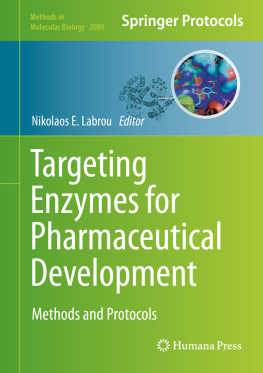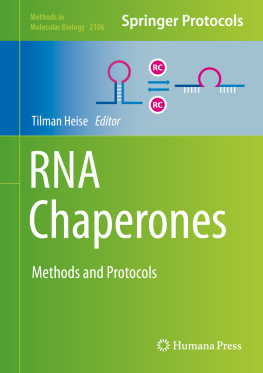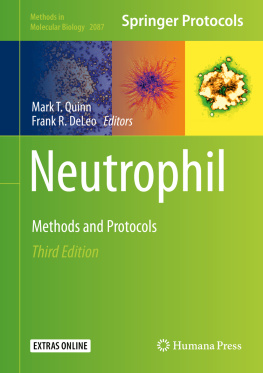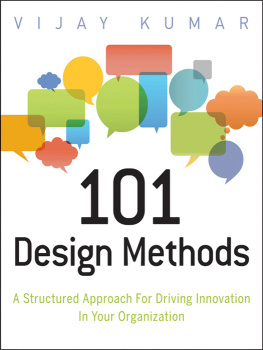Rahul Vijay - MERS Coronavirus Methods and Protocols
Here you can read online Rahul Vijay - MERS Coronavirus Methods and Protocols full text of the book (entire story) in english for free. Download pdf and epub, get meaning, cover and reviews about this ebook. year: 2020, publisher: Human, genre: Home and family. Description of the work, (preface) as well as reviews are available. Best literature library LitArk.com created for fans of good reading and offers a wide selection of genres:
Romance novel
Science fiction
Adventure
Detective
Science
History
Home and family
Prose
Art
Politics
Computer
Non-fiction
Religion
Business
Children
Humor
Choose a favorite category and find really read worthwhile books. Enjoy immersion in the world of imagination, feel the emotions of the characters or learn something new for yourself, make an fascinating discovery.
- Book:MERS Coronavirus Methods and Protocols
- Author:
- Publisher:Human
- Genre:
- Year:2020
- Rating:3 / 5
- Favourites:Add to favourites
- Your mark:
- 60
- 1
- 2
- 3
- 4
- 5
MERS Coronavirus Methods and Protocols: summary, description and annotation
We offer to read an annotation, description, summary or preface (depends on what the author of the book "MERS Coronavirus Methods and Protocols" wrote himself). If you haven't found the necessary information about the book — write in the comments, we will try to find it.
MERS Coronavirus Methods and Protocols — read online for free the complete book (whole text) full work
Below is the text of the book, divided by pages. System saving the place of the last page read, allows you to conveniently read the book "MERS Coronavirus Methods and Protocols" online for free, without having to search again every time where you left off. Put a bookmark, and you can go to the page where you finished reading at any time.
Font size:
Interval:
Bookmark:

For further volumes: http://www.springer.com/series/7651
For over 35 years, biological scientists have come to rely on the research protocols and methodologies in the critically acclaimedMethods in Molecular Biologyseries. The series was the first to introduce the step-by-step protocols approach that has become the standard in all biomedical protocol publishing. Each protocol is provided in readily-reproducible step-by-step fashion, opening with an introductory overview, a list of the materials and reagents needed to complete the experiment, and followed by a detailed procedure that is supported with a helpful notes section offering tips and tricks of the trade as well as troubleshooting advice. These hallmark features were introduced by series editor Dr. John Walker and constitute the key ingredient in each and every volume of theMethods in Molecular Biologyseries. Tested and trusted, comprehensive and reliable, all protocols from the series are indexed in PubMed.

This Humana imprint is published by the registered company Springer Science+Business Media, LLC, part of Springer Nature.
The registered company address is: 233 Spring Street, New York, NY 10013, U.S.A.
Since the emergence of SARS-CoV in 2002, the prophecy that a CoV outbreak is always around the corner was proven by the emergence of MERS-CoV in mid-2012. But unlike SARS-CoV, which was contained within an year of emergence (thanks to the efforts of medical professionals and researchers), MERS-CoV cases continue to occur after 7 years. According to WHO, since September of 2012, at least 2428 cases have been confirmed with 838 deaths spread over 27 countries. With this book, we consolidate the various techniques and methodologies that are being currently used in the study of MERS-CoV. Since MERS-CoV is a close cousin of SARS-CoV, the approaches presented here will have varying degrees of redundancy with those used for SARS studies. Given that there were two outbreaks within 10 years, one should be wary of another CoV outbreak in the near future. The chapters in this book should be considered as an up-to-date description of techniques that have been used in the study of CoVs, and will act as a useful reference if any such new outbreaks do appear.
This book has been divided into four parts: (1)Evolution and Entry of MERS-Coronavirus; (2)Genetic Alteration and Structural Determination of MERS-Coronavirus Proteins; (3)Quantitation of Virus and Antiviral Factors, and (4)Mouse Models for MERS-Coronavirus.
Emergence of new variants of coronaviruses with different host tropism warrants a thorough investigation of their evolution and acquired adaptability to these hosts. Thus, we begin the book with a chapter that details various methodologies to study evolutionary genetics of MERS-CoV under selection pressure. Understanding how the virus enters a host cell to initiate an infection is key to designing strategies to prevent it. Therefore, chapters describing various methodologies to identify MERS-CoV entry pathways and characterizing the key proteins employed by the virus to do so are also presented here.
An important aspect of studying viruses involves the ability to alter their genome by reverse genetics and to recover recombinant viruses with defined mutations. Such approaches will help in studying the functions of specific genes and their effects on virus survival and pathogenesis. These strategies will also aid in determining different checkpoints in the progression of virus growth and proliferation and developing therapeutics to prevent pathogenesis. For this purpose, a chapter detailing methodologies to genetically alter MERS-CoV is provided. Along the same lines, another chapter follows that describes protocols for deducing the crystal structure of an essential viral protein, helicase, that is indispensable for viral RNA transcription and replication.
With continuous emergence of coronaviruses, there is a critical need for diagnostic tools that could be employed in the field to successfully contain and prevent infection(s). To this end, two of the five chapters in Part III are dedicated to quantification of MERS-CoV viral loads using ELISA- and qRT-PCR-based techniques. To measure host immune parameters, methodologies to detect anti-MERS-CoV antibodies using microneutralization, pseudotyped viral particles, as well as ELISA-based methodologies are described.
Finally, no studies are complete without having reliable animal model systems to reproducibly replicate the disease and pathology observed in human cases. Such animal models are necessary to study the pathogenesis of the virus as well as the immune response to it. One bottleneck to achieving this goal was the inability of MERS-CoV to naturally infect mice, due to the lack of specific entry receptors. Part IV of this book begins with a chapter that describes how genetic engineering has been employed to render mice susceptible to MERS-CoV. This chapter is followed by another chapter that describes how the error-prone gene replication machinery of CoVs was utilized to generate mouse-adapted strain of MERS-CoV. Using such mouse models, one can ask what factors are produced and secreted by the host cell upon successful entry and productive infection by MERS-CoV. While detecting and assaying such molecules are relevant to understanding the host immune response, it is critical that these assays be performed under conditions in which the virus is completely inactivated to prevent laboratory-based transmission. A chapter describing an exhaustive protocol that simultaneously inactivates virus while retaining the quality of samples for downstream analysis is also provided. Vaccine and immunotherapeutic strategies rely on comprehensively understanding the host immune response stands following infection. Initial stages of MERS-CoV infection are associated with an exuberant inflammatory response that is both beneficial and damaging to the host. So we present two chapters, one focusing on evaluating the activation and inflammatory activity of immune cells in lungs and the other evaluating the histopathological changes following infection.
Font size:
Interval:
Bookmark:
Similar books «MERS Coronavirus Methods and Protocols»
Look at similar books to MERS Coronavirus Methods and Protocols. We have selected literature similar in name and meaning in the hope of providing readers with more options to find new, interesting, not yet read works.
Discussion, reviews of the book MERS Coronavirus Methods and Protocols and just readers' own opinions. Leave your comments, write what you think about the work, its meaning or the main characters. Specify what exactly you liked and what you didn't like, and why you think so.

